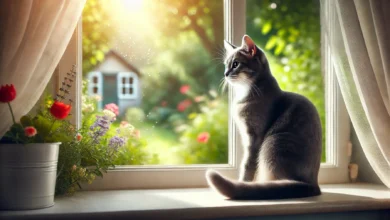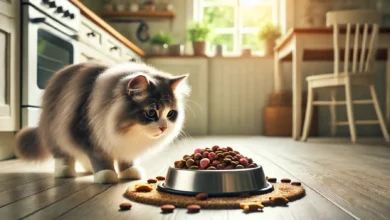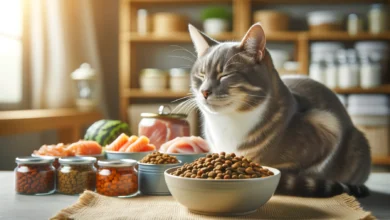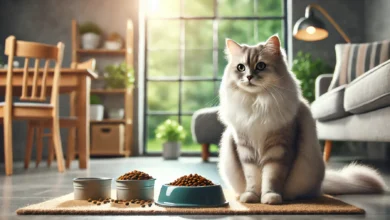Tips for Feeding Multiple Cats
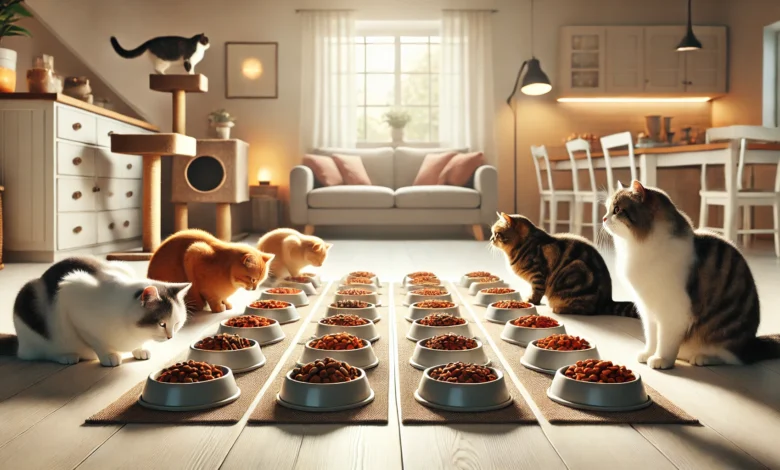
For many cat owners, feeding multiple cats can be a very enjoyable yet daunting responsibility.
Whereas the care and rearing of one cat are relatively simple, managing mealtime with two or more cats presents a different set of challenges altogether.
In fact, making certain each cat is getting the proper nutrition while ensuring competitive behavior does not become an overwhelming issue requires a little creativity and thoughtful planning.
Whether you have ever wondered how to feed your feline companions without causing stress or you simply want to learn more in general, this guide can help walk you through what you should know to ensure all of your furry friends are happy and healthy.
Table of Contents
Why Feeding Multiple Cats Can Be a Difficulty
Feeding time can become rather complicated quickly if you have more than one cat.
The different feline companions may be in various stages of their lives, have different needs or preferences in food, and exhibit different eating styles— all very good reasons it may be difficult for everyone to get what they need from meals.
So let’s look into some common issues that a multi-cat owner will find themselves dealing with around dinner time.
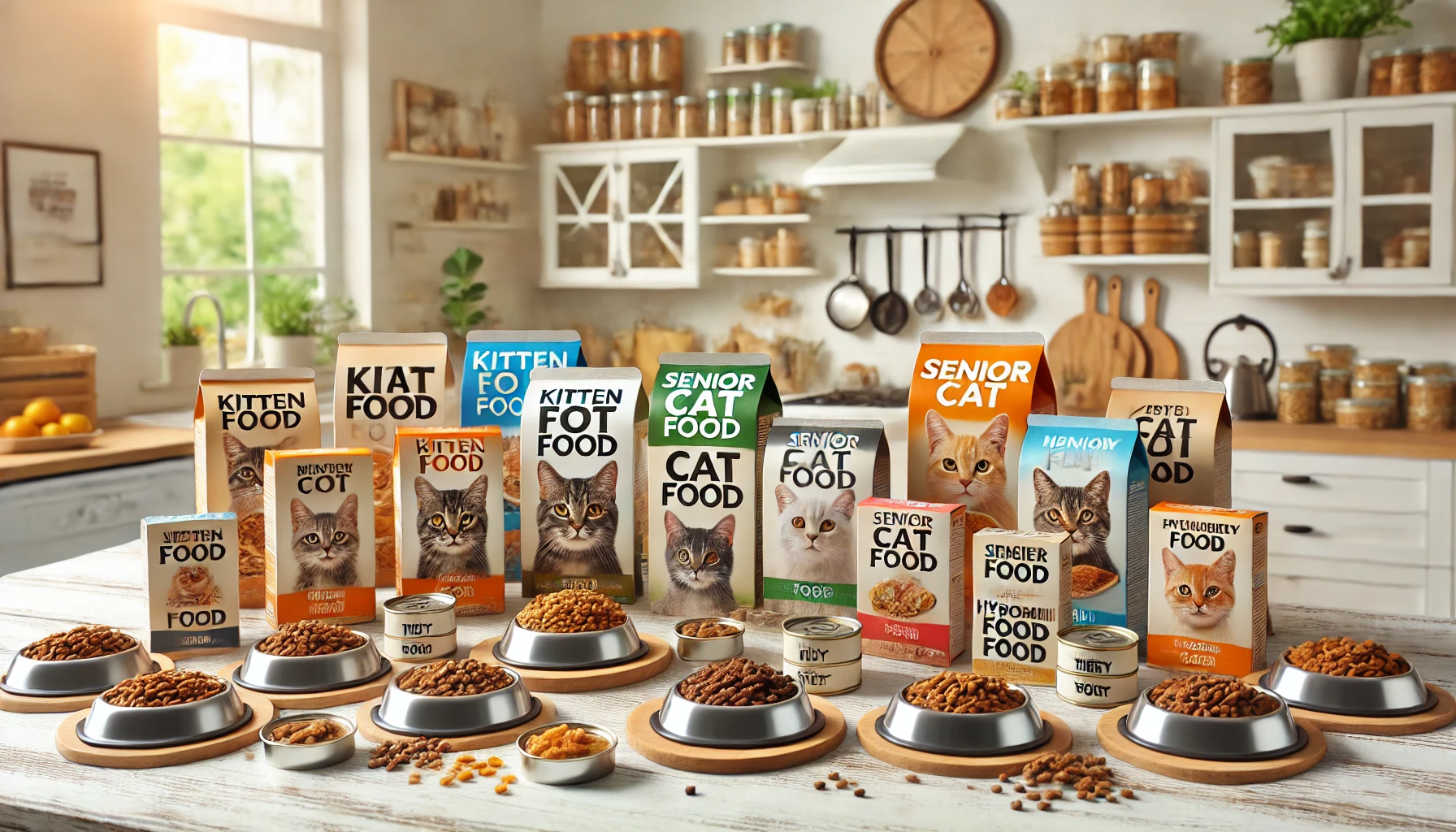
Managing Different Dietary Needs
One of the biggest challenges with feeding multiple cats is dealing with different nutritional needs.
Whether a cat requires a special diet because of health concerns or because another simply fancies a particular type of food, it is important to take into consideration what each cat needs nutritionally.
For example, a senior cat may need food that supports joint health, while an active and energetic young cat will require high-protein meals to fuel their energy.
- Older cats may require food additives such as glucosamine for joint health.
- Younger cats might require higher-calorie foods to support their energetic lifestyles.
- Cats with food allergies or sensitivities might need hypoallergenic diets.
You will need to work closely with your vet to make sure that a specific diet is optimal for your unique cats.
Feeding the correct cat the correct food will ensure they remain healthy without creating issues with food.
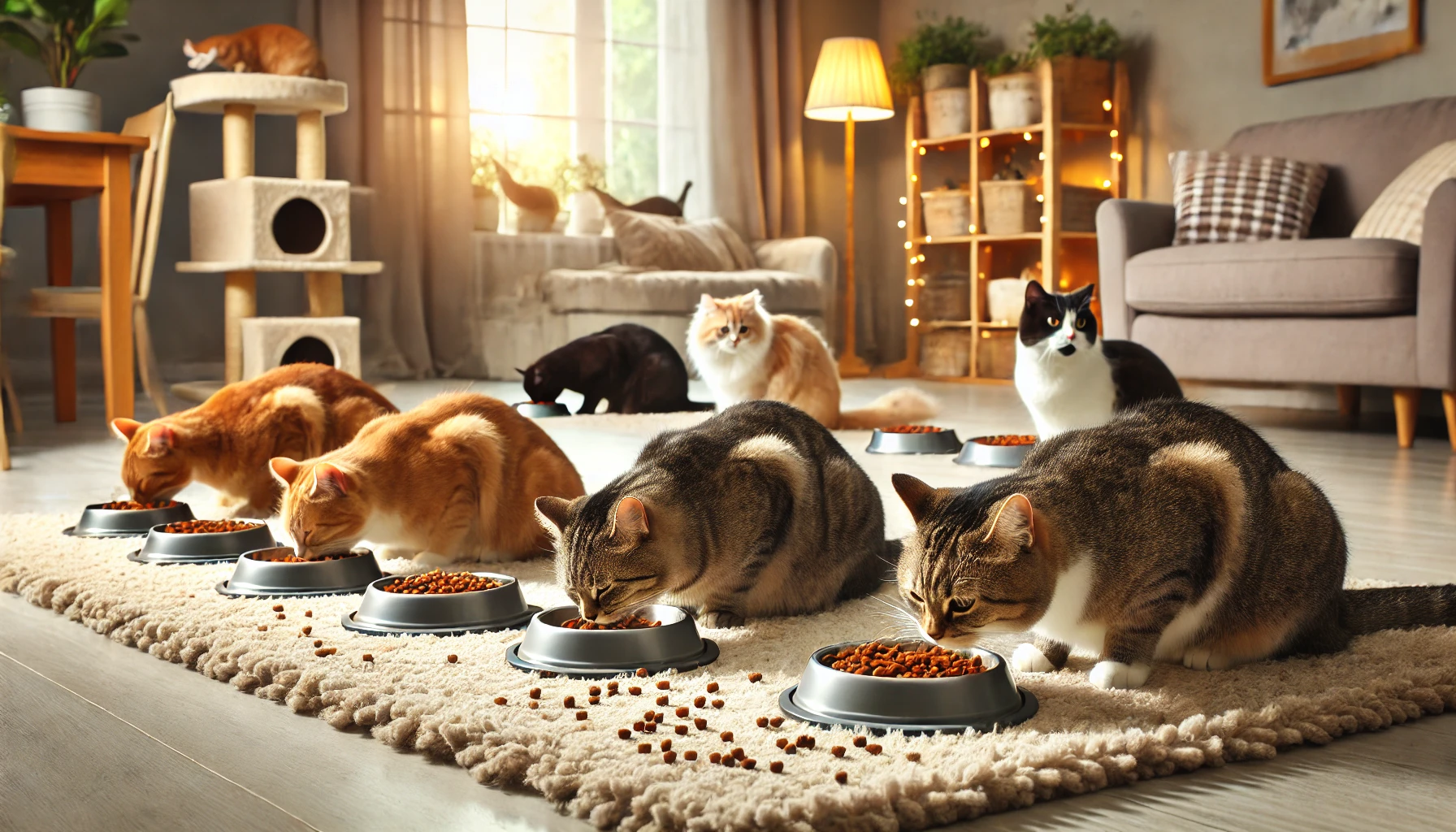
How to Handle Competitive Behavior at Mealtime
Another common issue is competitive feeding behavior, where some cats eat too quickly as if it’s their last meal, while others may avoid the feeding dish altogether due to feeling vulnerable.
In a multi-cat household, it’s important to ensure each cat can eat their share without stress or discomfort.
- Place individual food bowls in different areas of the house to avoid territorial disputes.
- If one cat tends to overeat, consider using a slow feeder to control the eating pace.
- Supervise mealtime, especially in the early stages, to ensure peaceful feeding.
By creating a calm and organized feeding environment, you can minimize stress among all of your cats and promote healthier eating habits.
Feeding multiple cats can quickly become complicated due to varying dietary needs and different feeding styles.
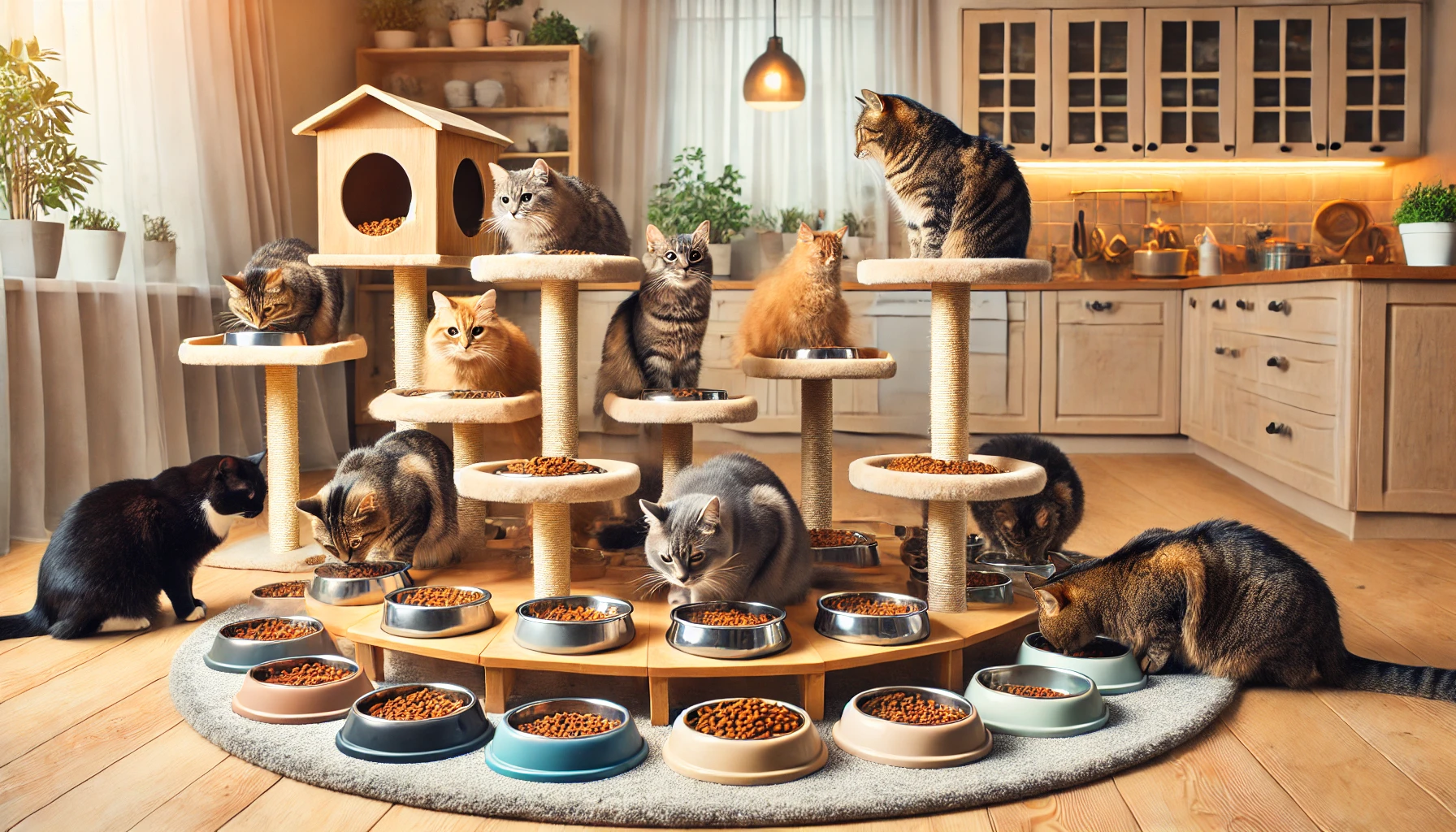
Setting Up Feeding Stations for Multiple Cats
You need to arrange a proper setup to feed multiple cats, which will help ensure there are no fights during mealtime and that all the cats receive an equal amount of food.
A well-planned feeding station helps prevent territorial issues, so the cats will have no problems eating.
Now, let’s look at some options on how to better organize feeding areas for your pets.
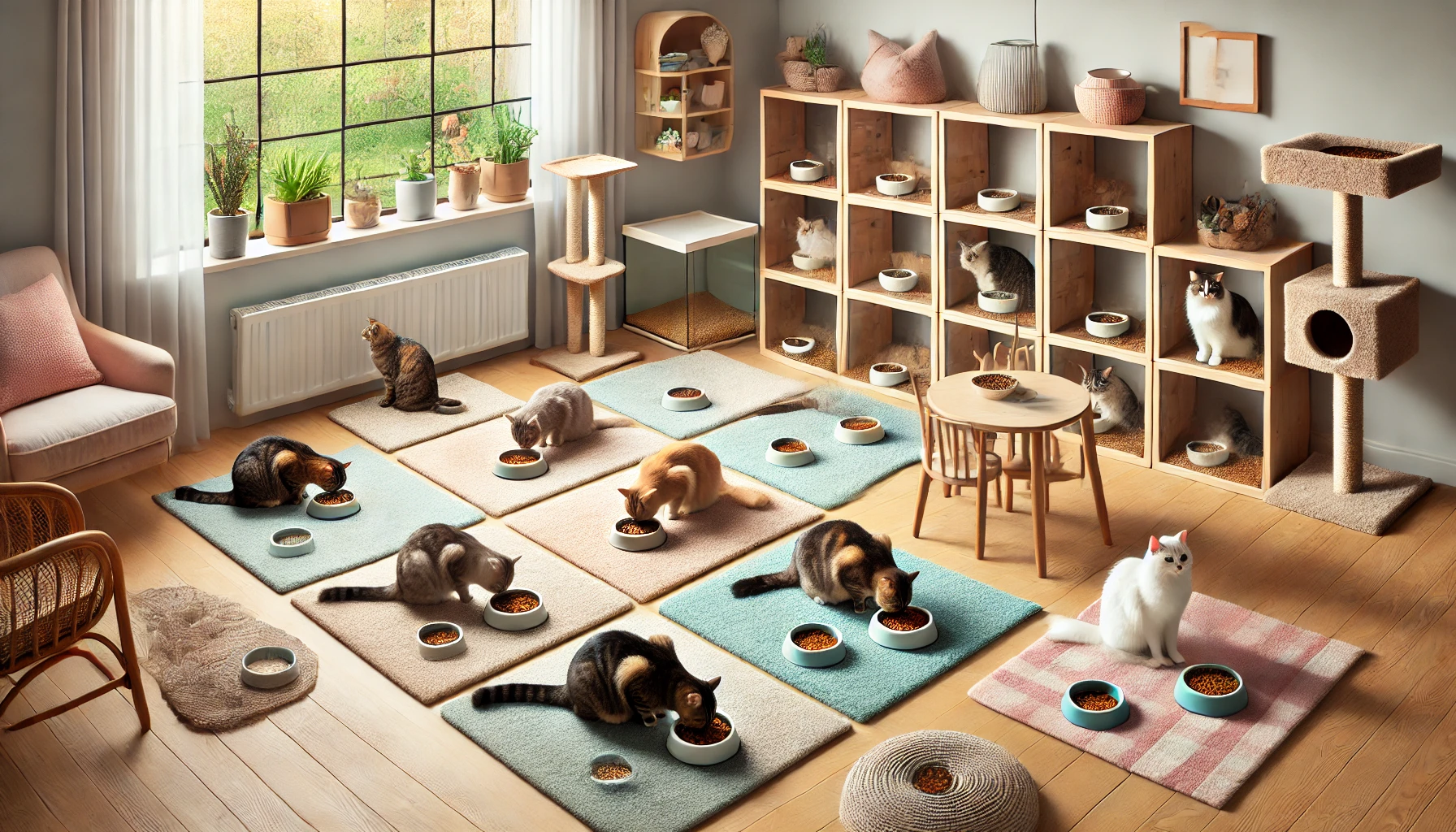
Designating Separate Eating Areas
When feeding multiple cats, each cat needs its own space at mealtimes.
Cats are naturally territorial, and some may become anxious or aggressive if forced to share an eating space.
Setting up separate feeding stations reduces competition and prevents aggressive behavior.
- Make sure each cat has its own food bowl in a quiet and comfortable spot.
- Consider placing food and water bowls in different rooms or on varying levels to give them more privacy during mealtime.
- If you live in a small apartment, use barriers like baby gates to create designated eating areas.
By providing designated dining areas, your cats will feel more comfortable and be less likely to avoid food due to intimidation from other cats.
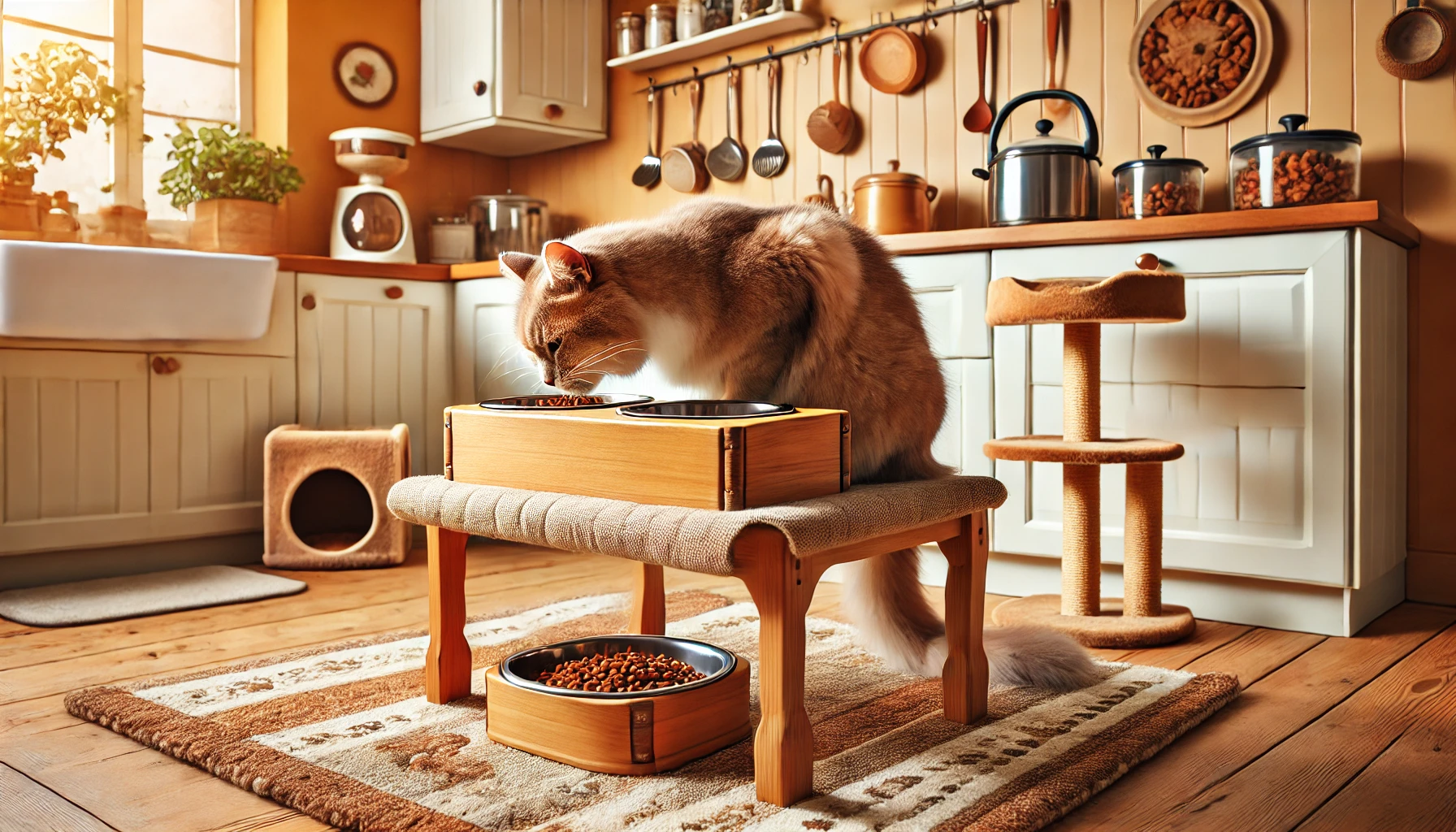
Using Elevated Bowls for Cats with Limited Mobility
It’s a good idea to use elevated food bowls if you have older cats or cats with mobility issues.
Elevated bowls make eating easier for cats with joint problems or arthritis, as they don’t have to bend as much.
This can also help with digestion by aligning their posture better while eating.
- Look for feeders specifically designed for senior cats or those with mobility issues.
- Elevated bowls can also reduce the incidence of regurgitation by allowing for a more comfortable eating posture.
- Ensure the feeder is at the right height for the size and needs of your cat.
Elevated feeding stations make it easier for cats experiencing mobility issues to eat their meals without discomfort, ensuring they receive the nutrition they need.
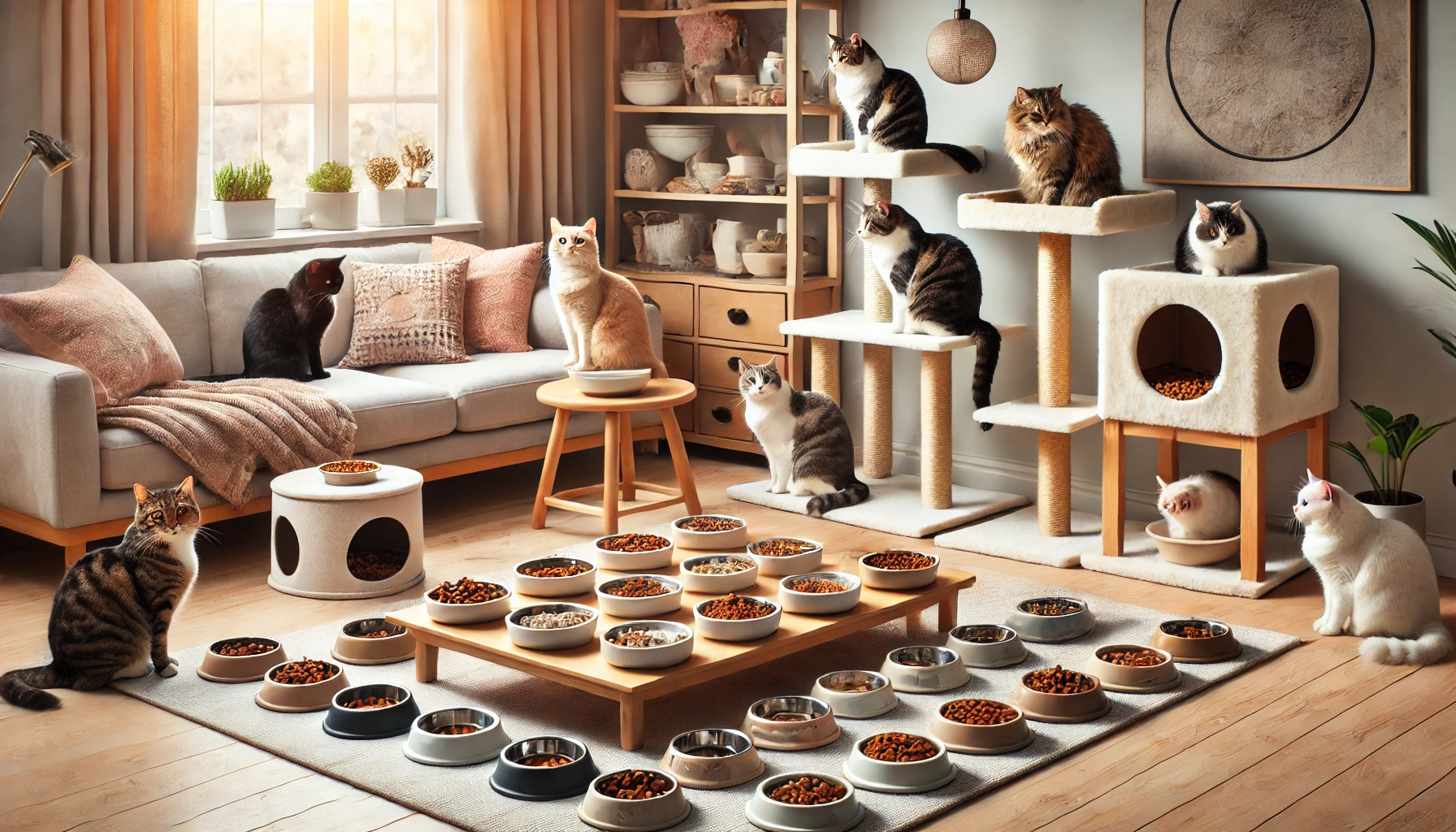
Managing Space for Multiple Food Bowls
Living with multiple cats can be quite challenging when managing numerous food bowls in a limited space.
However, there are creative ways to optimize your space and accommodate each cat’s feeding station.
- Use vertical space by placing bowls on high shelves or countertops for cats that enjoy climbing.
- For ground-level feeders, ensure bowls are spaced out to reduce competition during mealtime.
- Switch out feeding stations occasionally to keep your cats engaged and comfortable in their eating environment.
By being efficient with your space, all of your cats can enjoy a peaceful and orderly mealtime experience.
Separate feeding stations prevent territorial disputes and ensure that each cat gets their share of food peacefully.
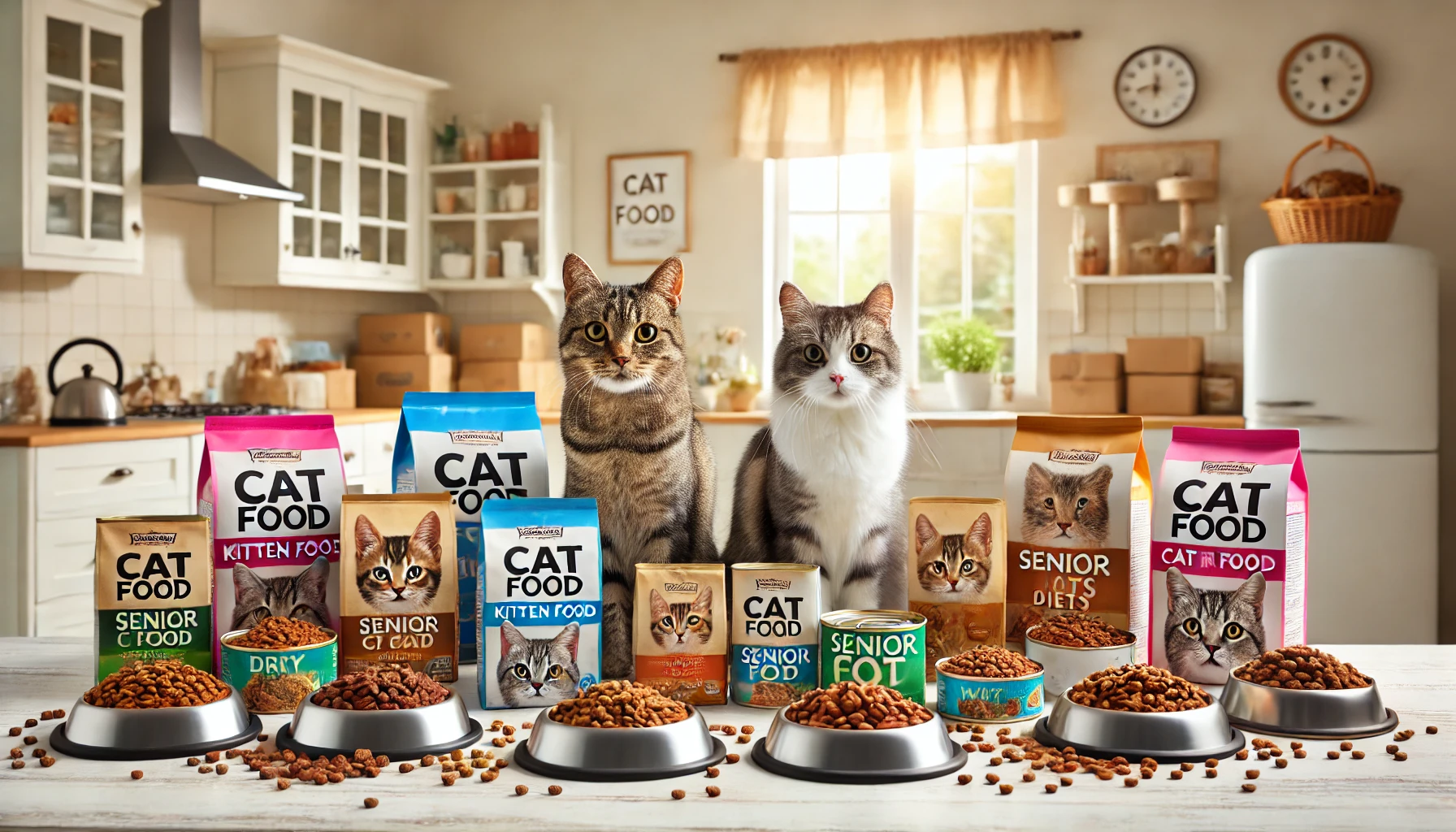
Choosing the Best Food for Multiple Cats
Deciding on the best kind of food for feeding multiple cats can be a challenge, especially since each cat has different nutritional needs.
Finding the balance between having senior cats, kittens, and cats that require special diets is crucial to ensuring that all of your cats are receiving the proper nutrition.
So, which food is best for multiple cats?
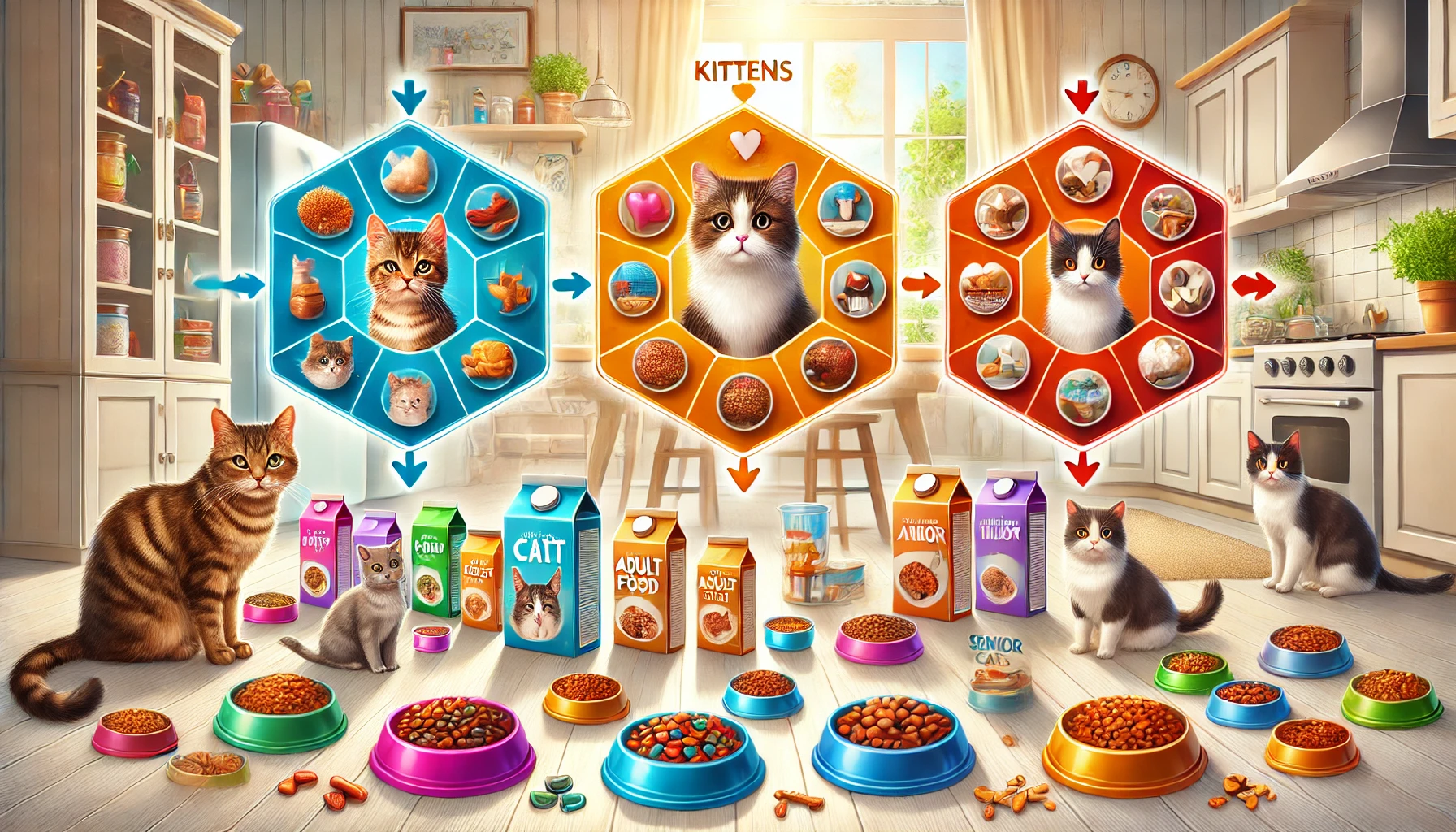
Balancing Nutrition for Cats in Different Stages of Life
Feeding a large number of cats can be quite a task, especially when considering their different life stages.
Kittens require more energy and need higher levels of protein and fat, while older cats might need food with added supplements like glucosamine to maintain joint health.
Feeding them properly helps keep them healthy and active.
- Kittens need food with a special formula rich in protein, fat, and other nutrients for fast growth.
- Older cats benefit from added supplements like Omega-3 fatty acids for joint support and lower-calorie options to avoid weight gain.
- If you prefer to feed a single type of food to all of your cats, consider an all-life-stages cat food.
Balancing the nutritional needs of your cats according to their ages is essential in a multi-cat household.
Regular check-ups with your vet can help determine any dietary adjustments needed as your cats grow older or as new kittens are introduced.
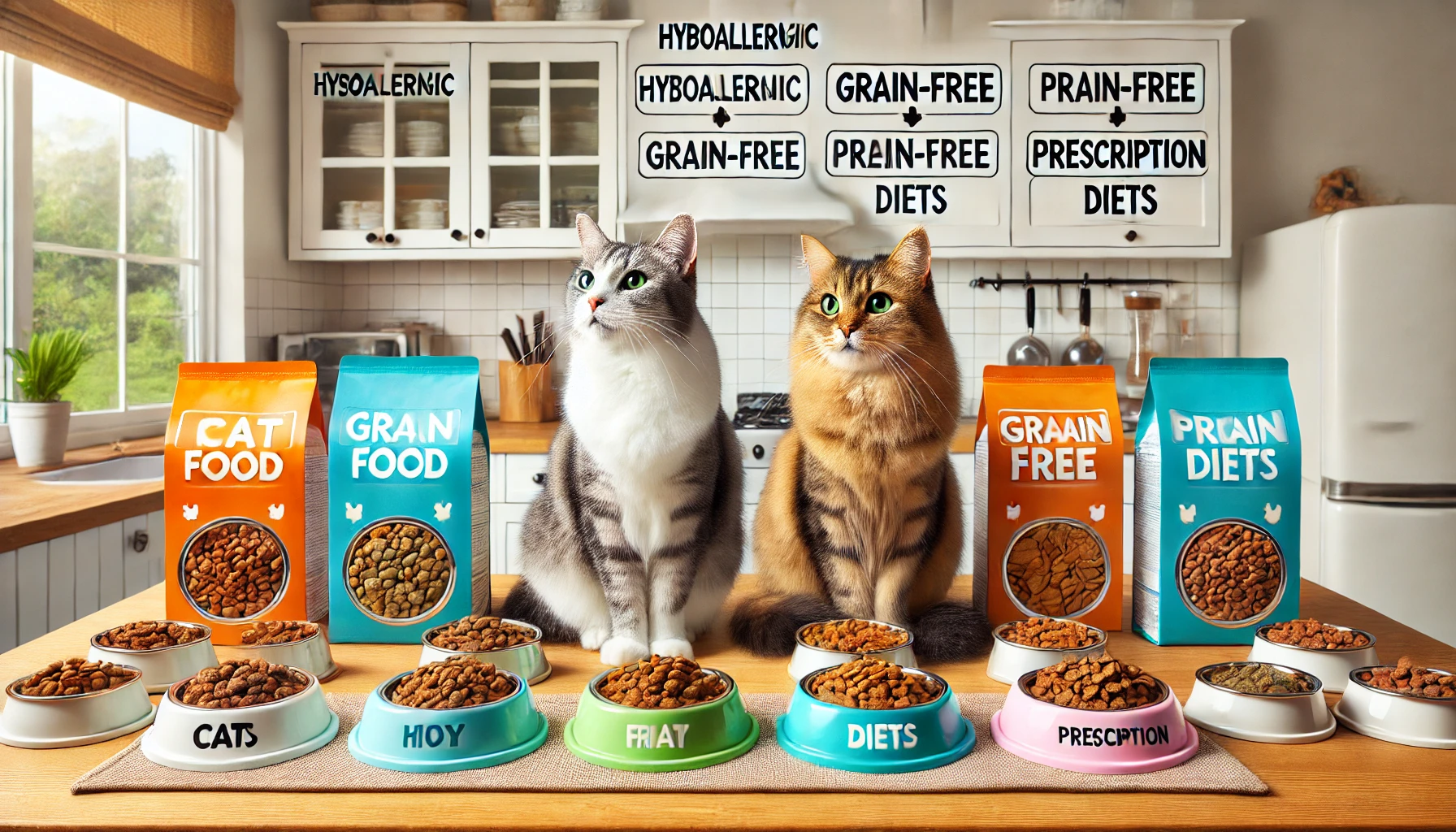
Catering to Cats with Special Dietary Requirements
It’s not unusual for some cats to need special types of food due to allergies, sensitivities, or medical issues.
Maintaining these diets in a multi-cat household may be demanding, but it’s crucial to ensure every cat gets the right food without compromising their health.
- Cats with food allergies require hypoallergenic diets devoid of common allergens like grains, chicken, or dairy products.
- If a cat has kidney issues, they will need prescription-based foods that support kidney function.
- Use separate feeding stations or timed feeders to prevent cats with special diets from accessing other cats’ food.
Working closely with your vet to manage special dietary needs will go a long way in ensuring the health and well-being of all your cats.
Monitoring each cat’s food intake is essential to ensure their nutritional needs are met without interference from other cats.
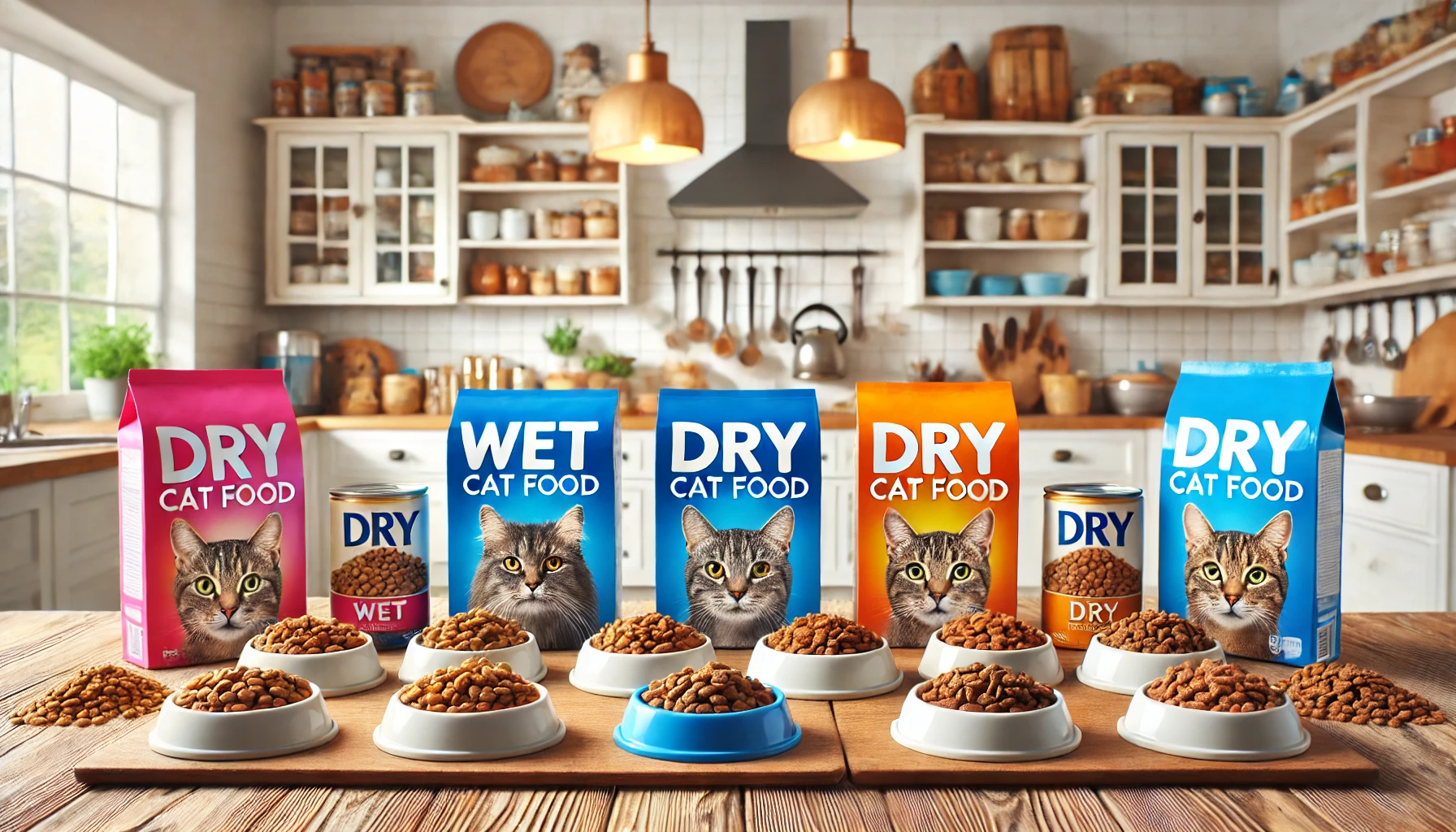
Wet vs. Dry Food: What Works Best?
The debate between wet and dry food is common, especially for owners feeding multiple cats.
Both wet and dry foods have their benefits, and the right choice depends on what your cats prefer and their specific health needs.
- Wet food: Wet food provides more water, which is helpful for cats with urinary tract issues. It’s also very palatable, making it a good option for picky eaters or those with dental problems.
- Dry food: Dry food is convenient to store and serve. It can help reduce plaque buildup on teeth and is more economical for households with multiple cats.
Consider a mix of wet and dry food for variety—one meal wet, one meal dry—to balance hydration with convenience.
Ultimately, the decision to feed wet or dry food comes down to your cats’ particular needs and preferences.
A combination of both can offer the best of both worlds, helping your cats stay hydrated while maintaining dental health and variety in their diet.
Choosing the right food for multiple cats with different needs can be challenging, but it’s essential for their health.
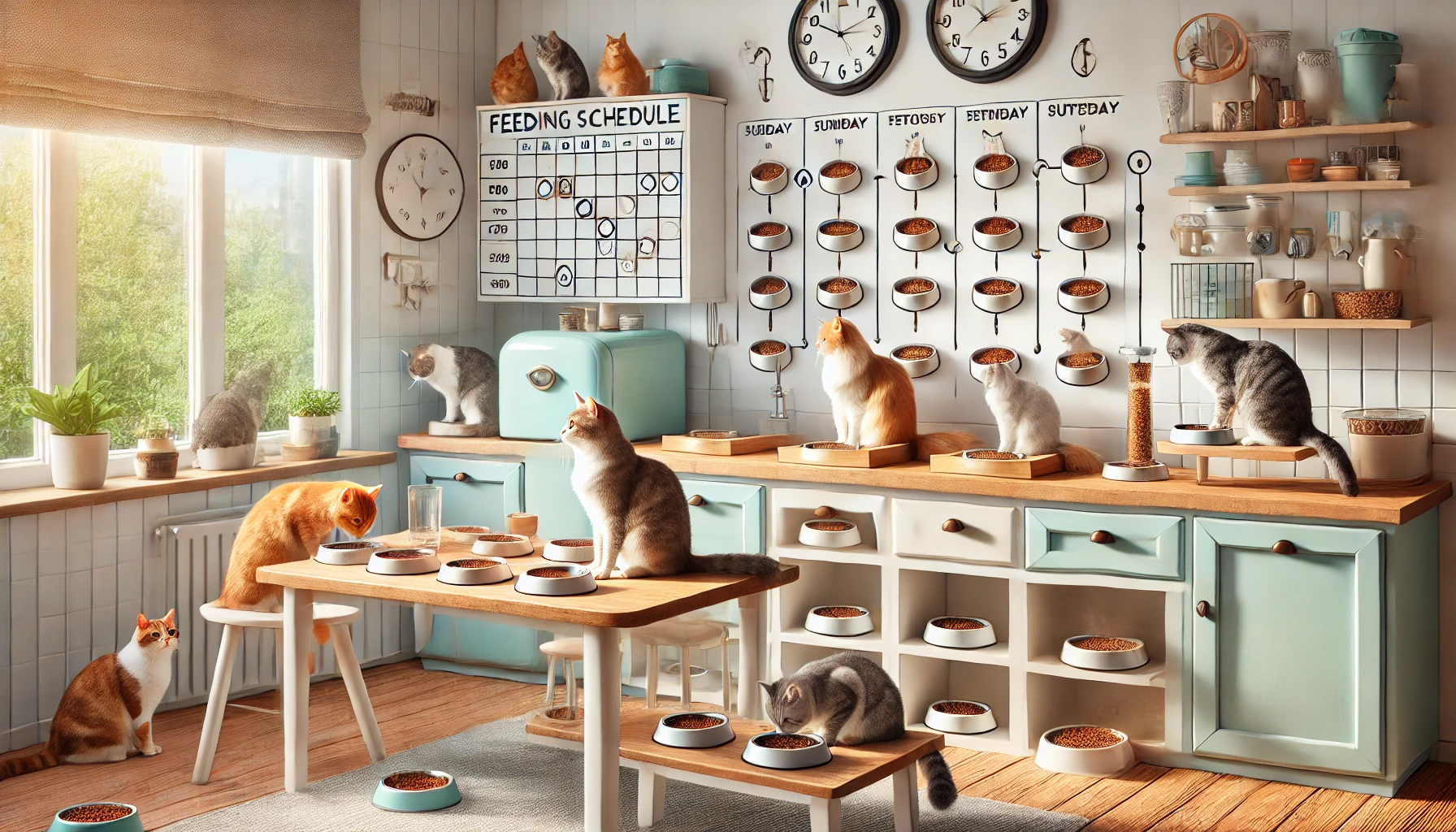
Feeding Schedule for Multiple Cats
Instituting a regular feeding schedule when you have multiple cats is essential.
A regulated pattern not only keeps your cats healthy but also reduces the incidence of food fights and overeating.
A well-planned feeding schedule ensures that all cats get the right amount of food with minimal stress.
Let’s explore some effective ways to implement a feeding schedule that works for your multi-cat household.
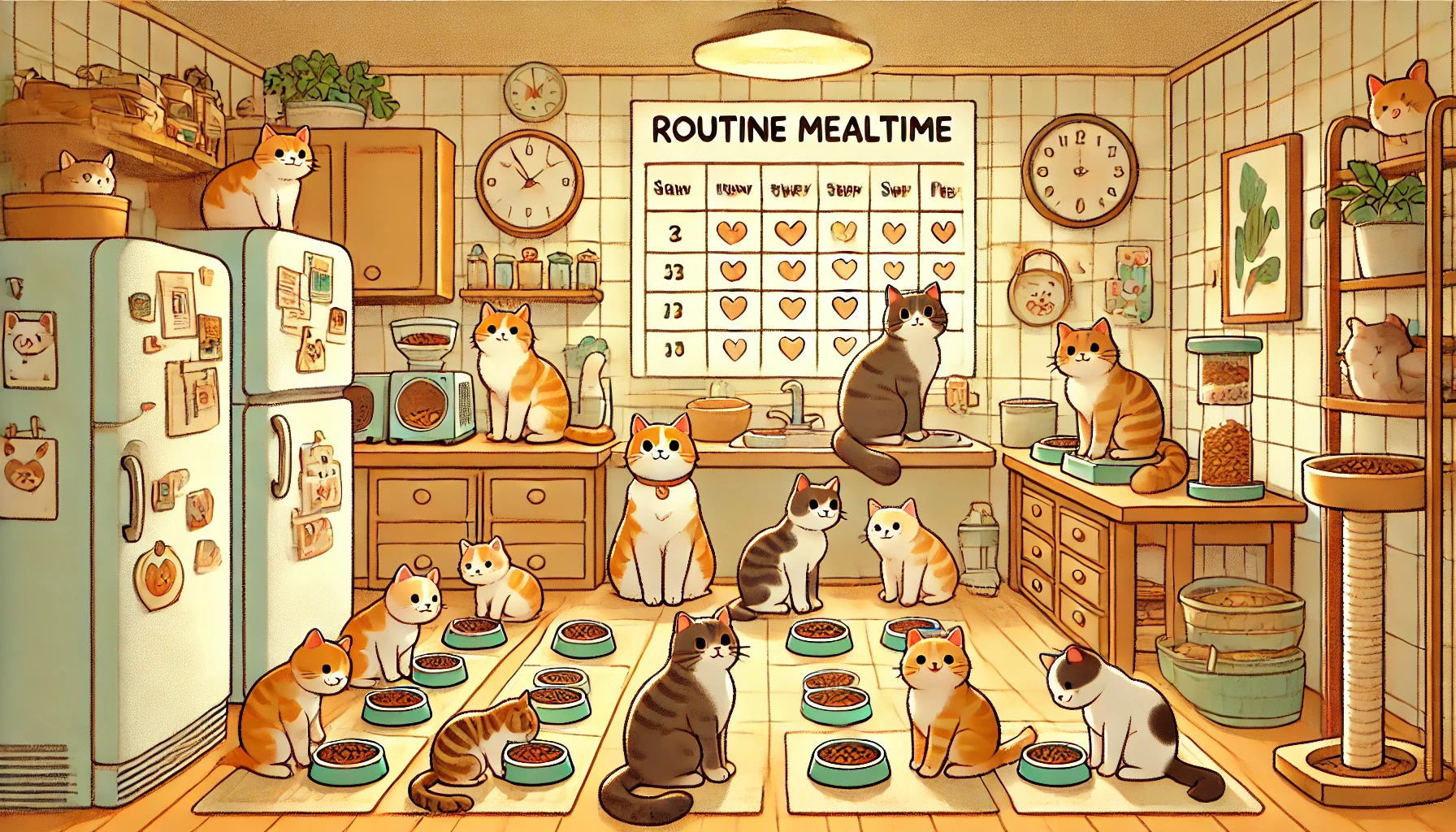
Setting Up Routine Mealtimes
Routine is imperative for cats, and set mealtimes make them feel more secure.
Feeding your cats at the same time each day can help establish stability in the household, especially when you have several cats, as this can prevent chaos at mealtime.
- Feed your cats at the same times every day, preferably in the morning and the evening.
- Avoid free-feeding if possible, as some cats may overeat and become obese.
- Use automatic feeders to maintain consistency when you aren’t around at the same time each day.
By following a regular feeding schedule, your cats will quickly learn when to expect their meals, reducing mealtime stress and making feeding multiple cats more manageable.
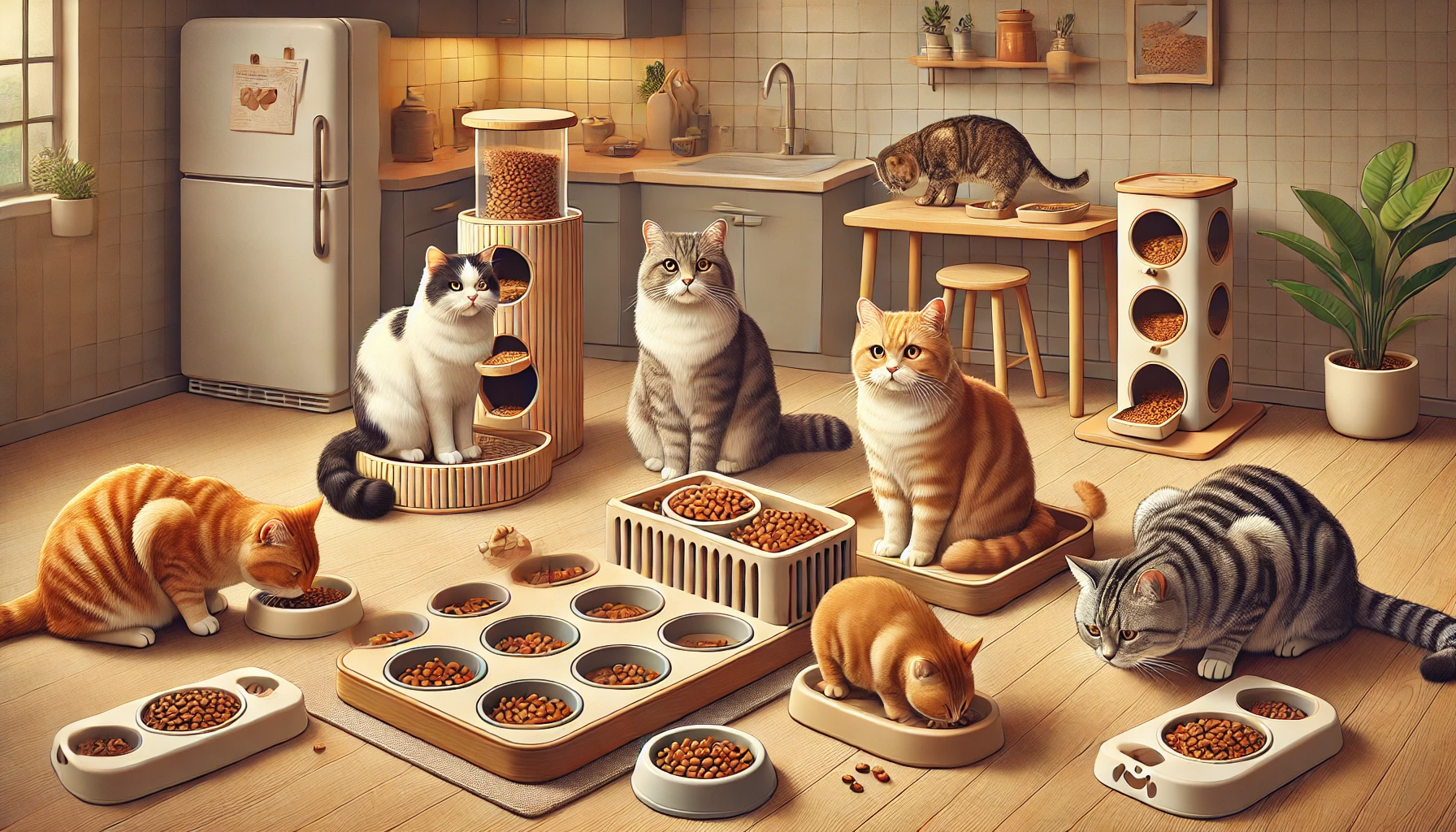
How to Prevent Your Cats from Overeating
In a multi-cat household, it can be difficult to monitor how much each cat eats, especially if some are prone to overeating.
Overeating can lead to obesity and other health issues, so portion control and feeding habits are essential to prevent this.
- Measure individual portions to avoid overfeeding any cat.
- If one cat tends to steal food from others, use separate feeding stations or timed feeders to control portions.
- For cats that eat too quickly, invest in a slow feeder or puzzle feeder to regulate their eating pace.
By managing portions and preventing overeating, you can keep your cats healthy and reduce food-related competition and stress.
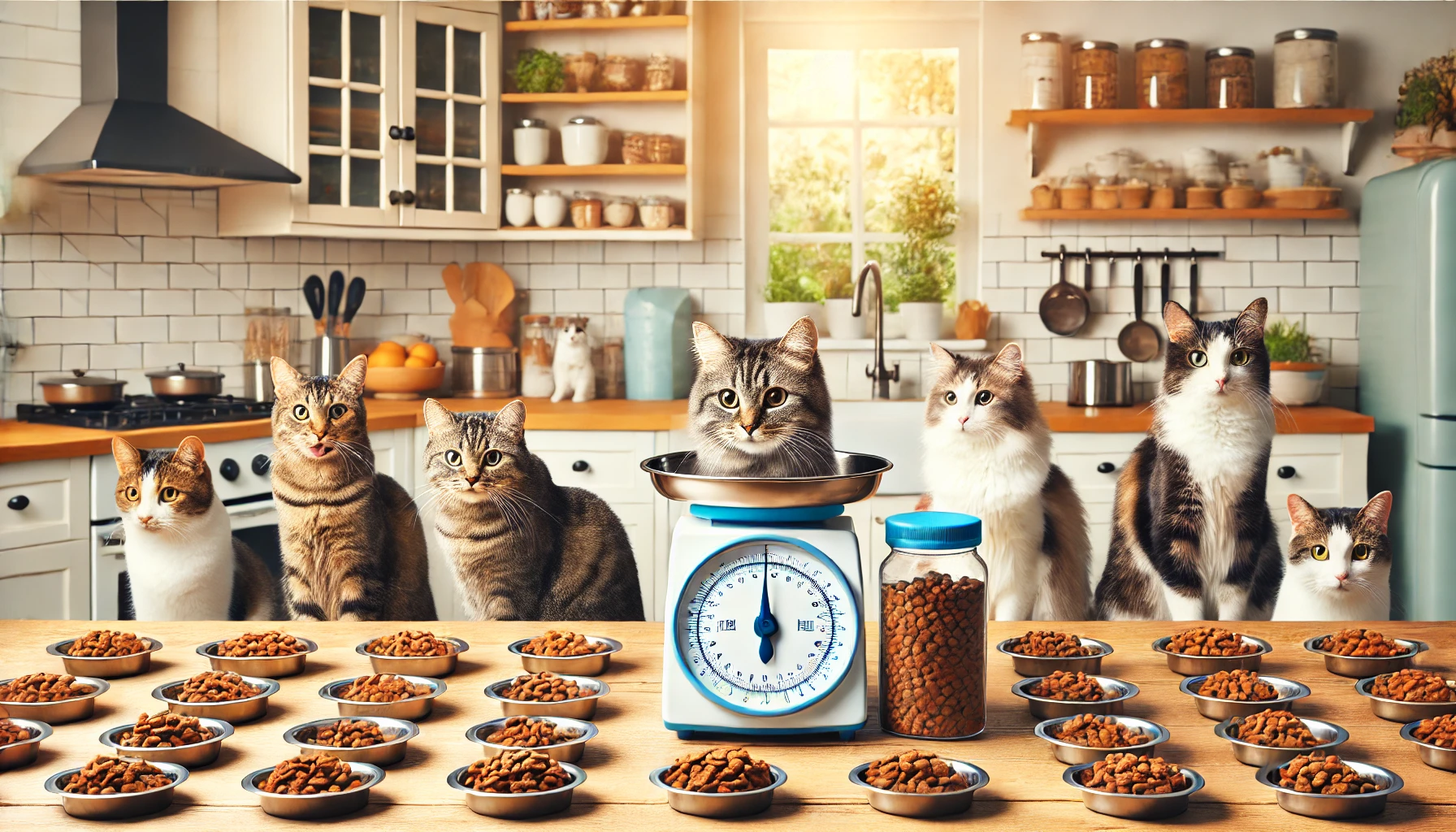
Managing Meal Portions
Accurately measuring meal portions is crucial for maintaining your cats’ health.
Feeding too little or too much can lead to health problems.
Each cat’s portion size will vary depending on their age, weight, and activity level.
- Consult your vet to determine proper portion sizes for each of your cats based on their individual needs.
- Use a digital food scale to measure portions precisely, ensuring each cat receives the correct amount of food.
- Adjust portion sizes based on any noticeable weight changes or activity level fluctuations.
Proper portion control helps your cats maintain a healthy weight and ensures they get the nutrients they need to stay active and happy.
Establishing a regular feeding schedule can reduce food fights and help maintain a calm mealtime routine.
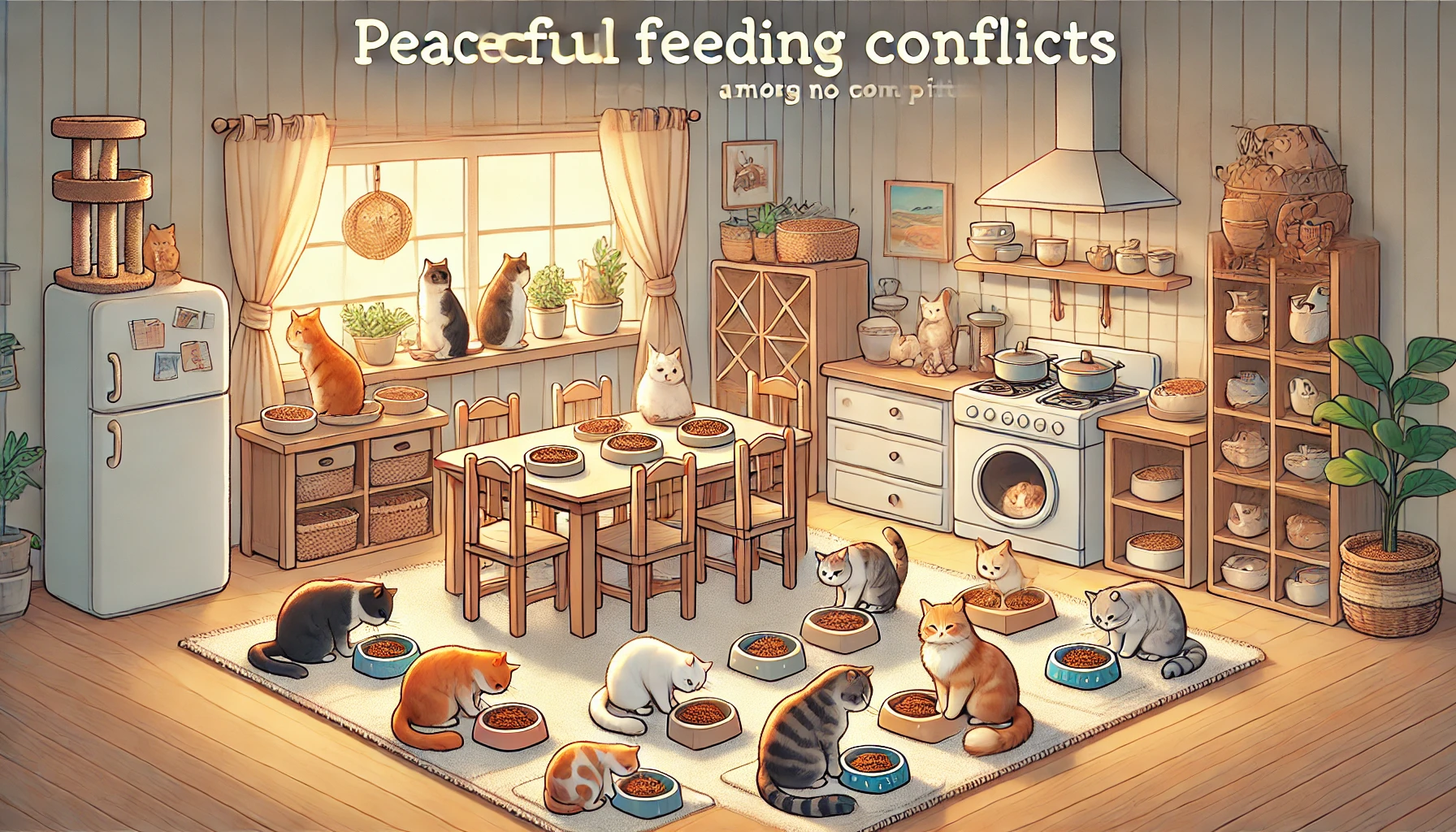
How to Handle Feeding Conflicts Among Cats
Feeding conflicts in multi-cat households can manifest in many ways: stress, aggression, or one cat not receiving their share of food.
Such conflicts must be handled properly so that mealtimes can be peaceful and harmonious.
From food aggression to ensuring each cat gets their fair share, let’s explore some practical solutions to resolve feeding conflicts among your cats.
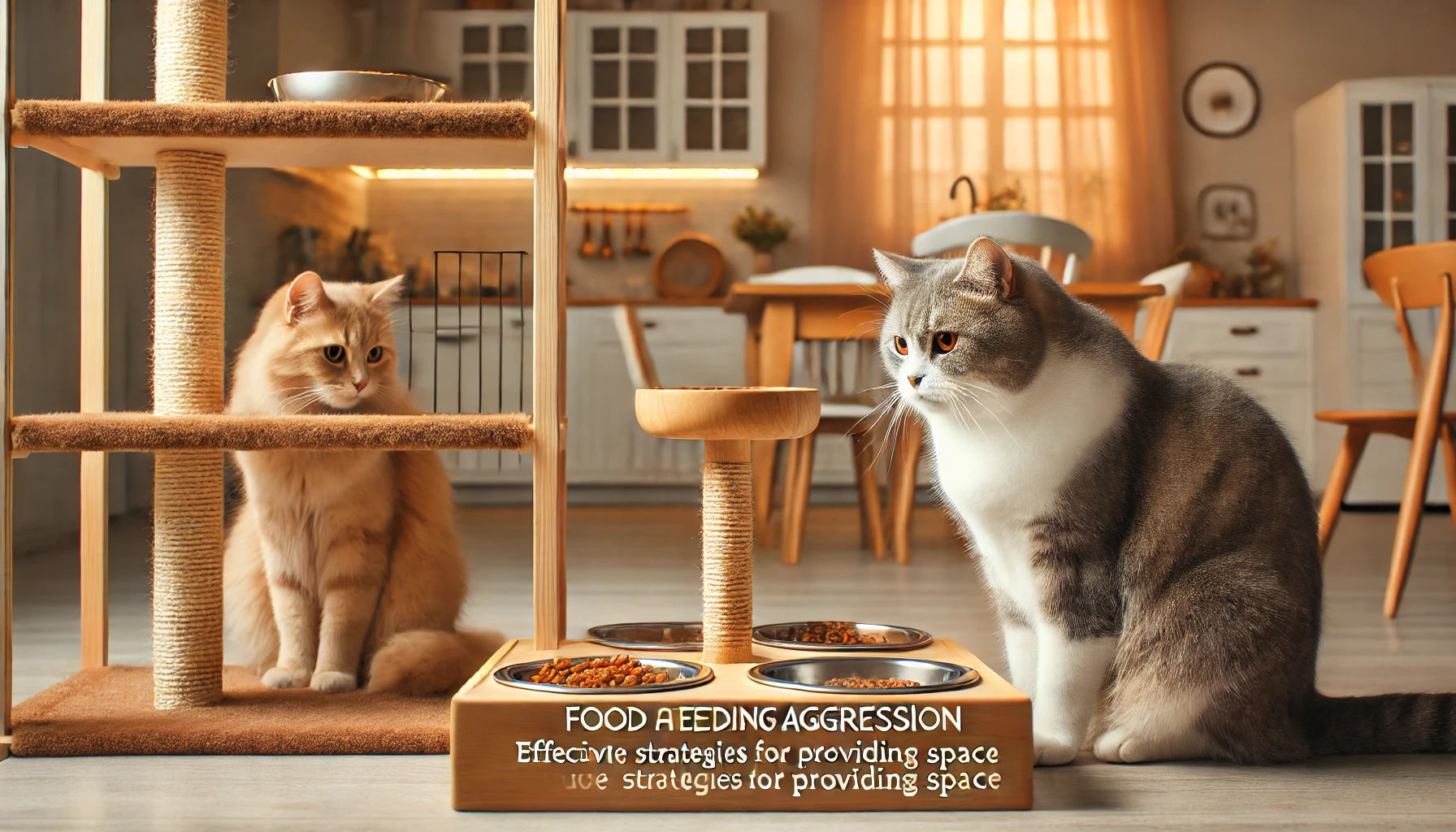
Handling Food Aggression
Food aggression occurs when one cat becomes overly protective of their food and may lash out at other cats during mealtime.
This kind of behavior creates a tense atmosphere and prevents others from eating their meals undisturbed.
To avoid food aggression, a peaceful and controlled feeding environment is necessary.
- Feed aggressive cats in a separate room or area to prevent them from intimidating others.
- Utilize sprays or diffusers that release calming feline pheromones to reduce stress and aggression in cats.
- Establish a feeding schedule so that all cats know when their food is due, reducing anxiety around mealtime.
By separating aggressive cats and creating a peaceful feeding environment, you can help reduce food aggression and ensure all cats get their proper share of food.
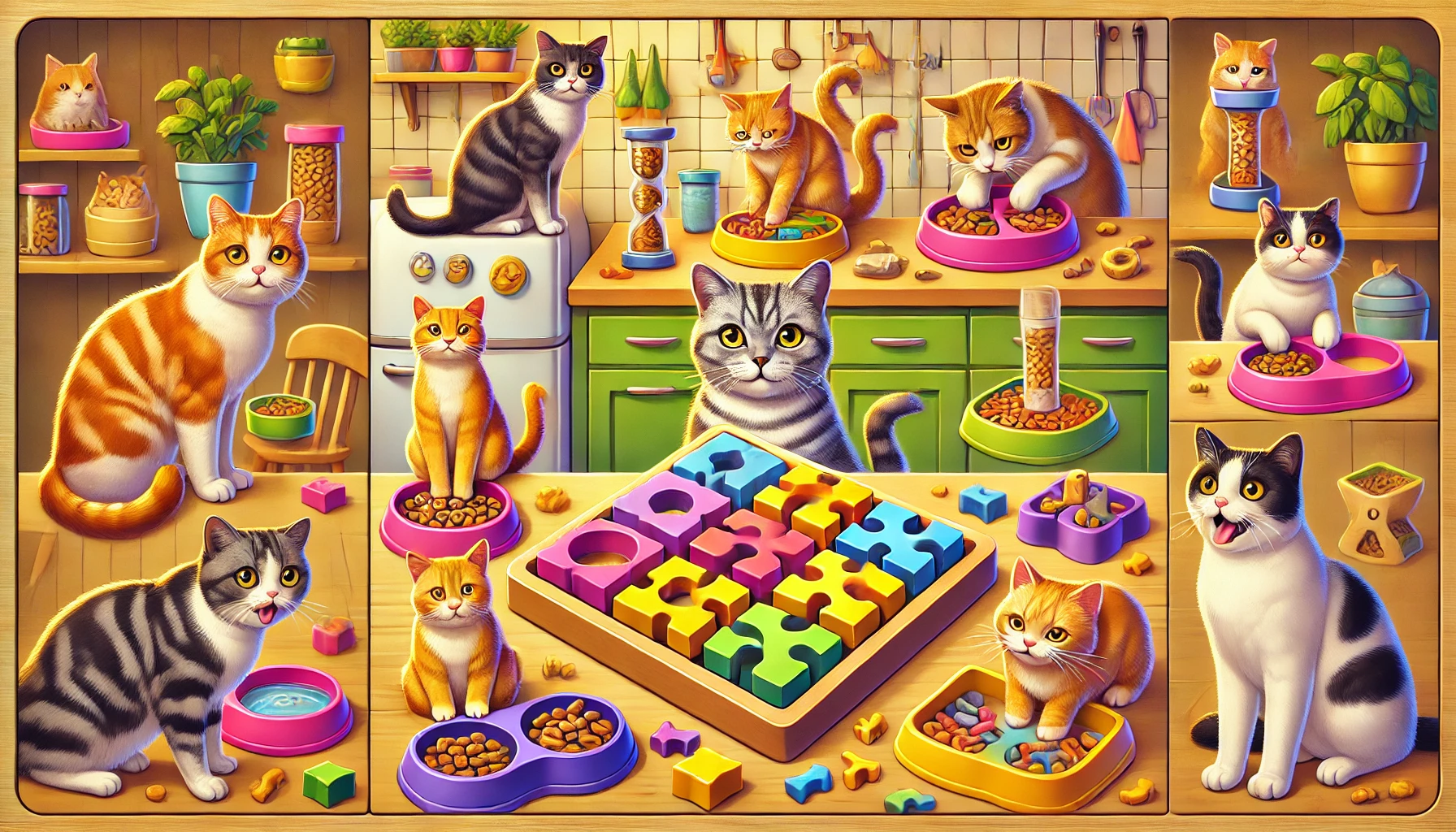
Using Puzzle Feeders to Slow Down Eating
Some cats eat too quickly, which can lead to digestive issues or overeating.
Puzzle feeders are an excellent solution to slow down eating and keep cats mentally stimulated during meals.
These feeders make cats work for their food, turning mealtime into an engaging activity with controlled eating.
- Consider your cats’ skills and choose slow-feed bowls, treat-dispensing balls, or interactive food mazes.
- Introduce puzzle feeders gradually to avoid frustrating your cats as they learn how to use them.
- Use puzzle feeders for cats that tend to overeat or eat too quickly to promote slower, more controlled feeding.
Puzzle feeders not only help slow down fast eaters but also provide mental stimulation, reducing stress and boredom in your cats.
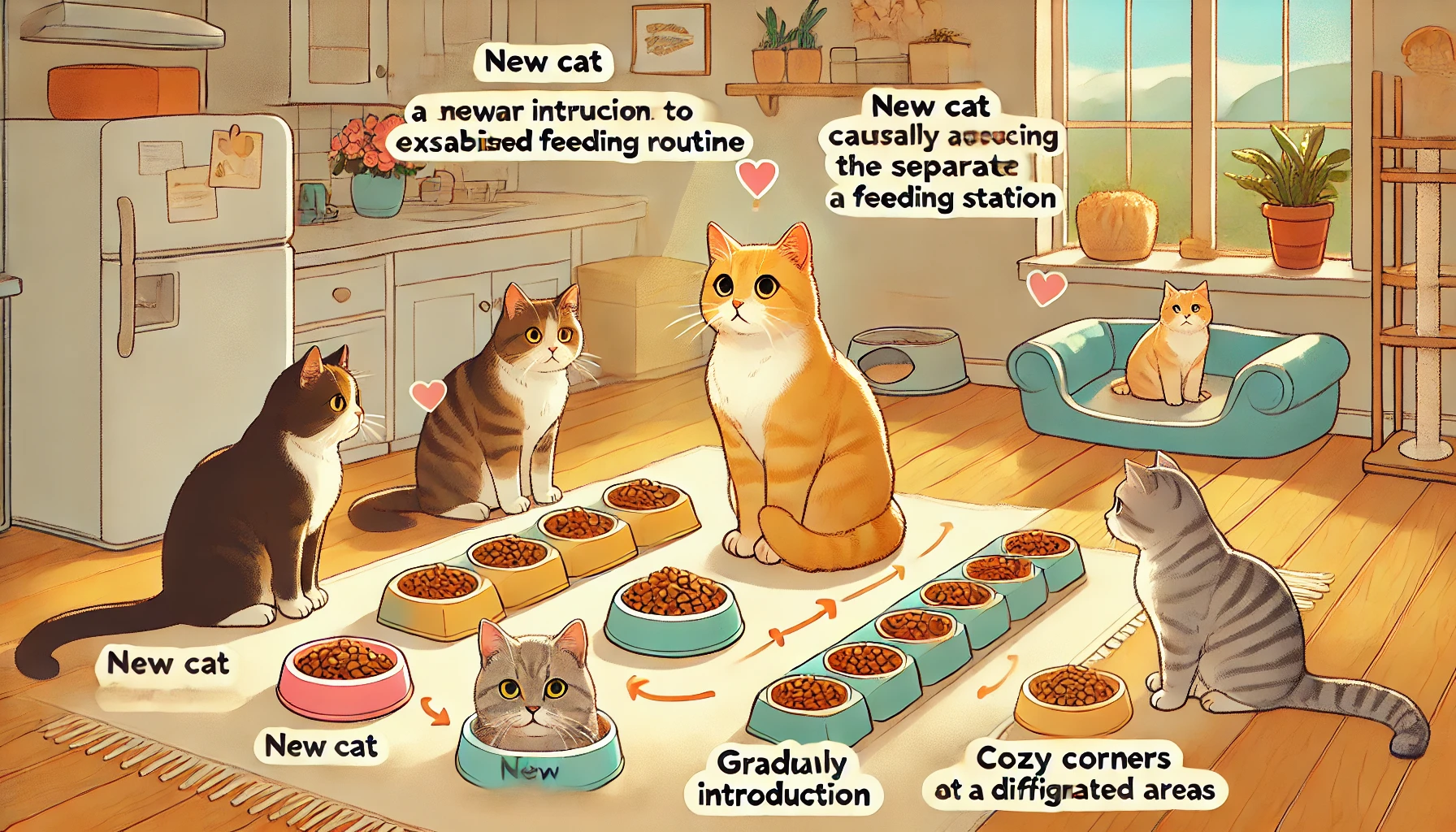
Introducing New Cats to the Feeding Routine
When introducing a new cat into the home, feeding conflicts can arise as the new cat adjusts to the established routine.
It’s important to introduce new cats to the feeding schedule gradually to avoid territorial issues and ensure peaceful mealtimes for all the cats.
- Feed the new cat in a separate room to reduce tension and allow them to eat calmly.
- As they gain more confidence around other cats, gradually move the new cat’s feeding station closer to the existing feeding areas.
- Monitor interactions during mealtime to prevent any bullying or intimidation of the new cat by others.
By slowly integrating new cats into the feeding routine, you can minimize conflicts and help all your cats adjust to the changes in their environment.
Feeding conflicts such as food aggression must be managed to create a peaceful feeding environment for all cats.
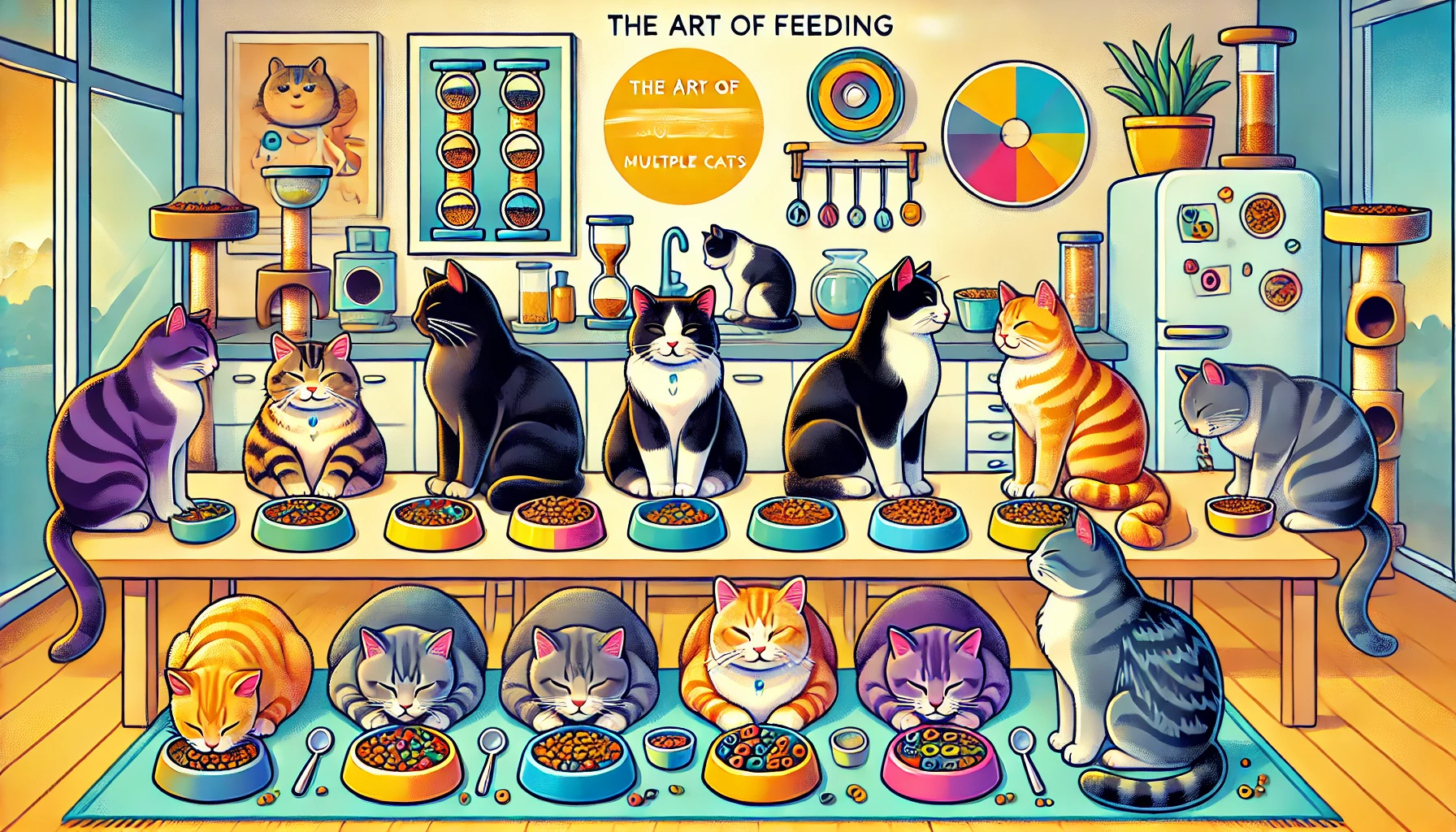
Conclusion: The Art of Feeding Multiple Cats
Feeding multiple cats can be as rewarding as it is challenging.
Once you adopt the right strategies, you will ensure that all of your cats are well-fed, and mealtimes no longer become chaotic.
Understanding the particular needs of your feline companions, structuring their feeding stations, and maintaining a regular feeding schedule all contribute to creating an environment where each cat can thrive.
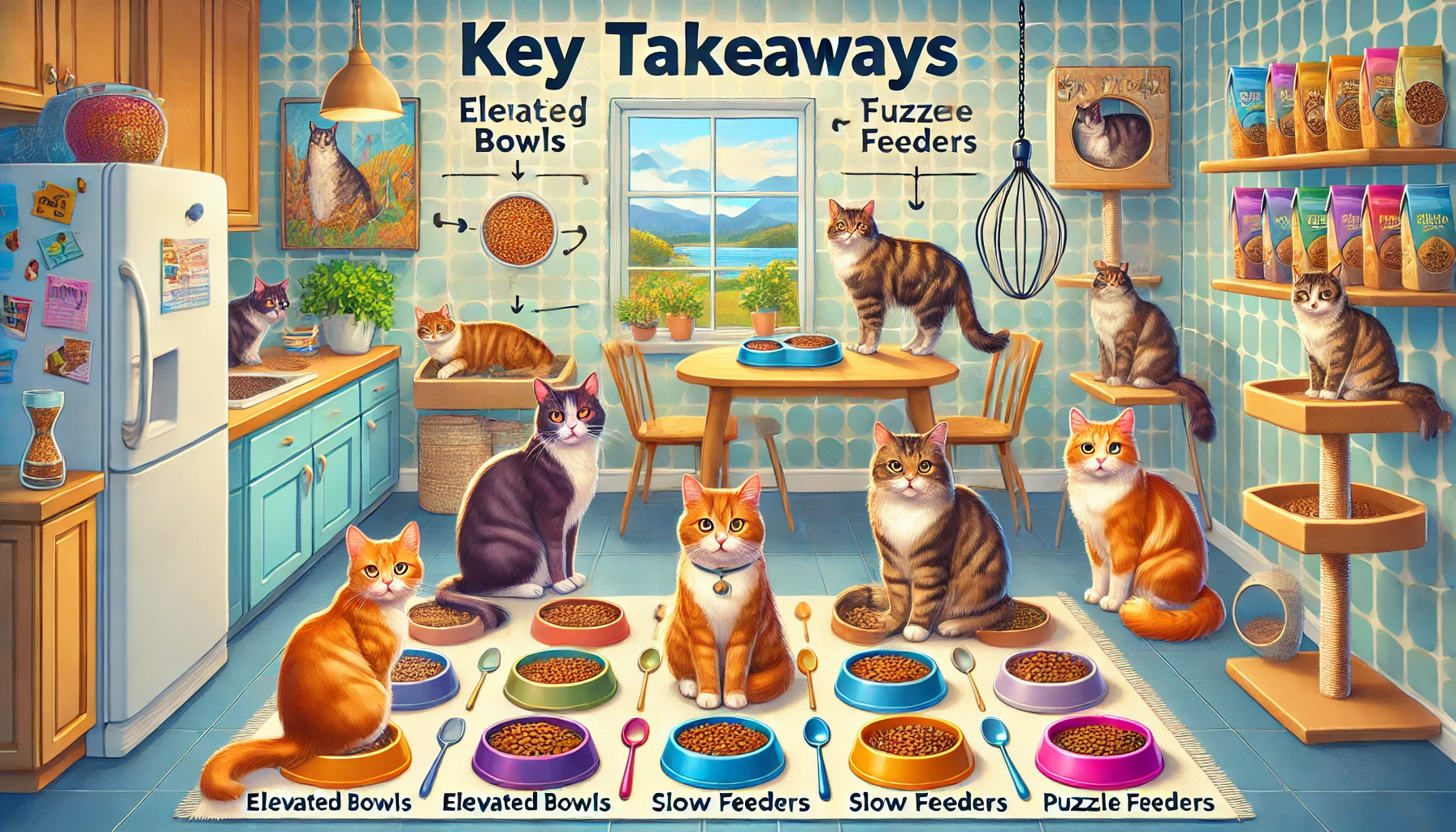
Key Takeaways for Feeding Multiple Cats
Throughout this article, we have covered various aspects of feeding multiple cats, from managing dietary differences to preventing feeding conflicts.
It’s important to remain mindful of each cat’s unique needs.
Here are some key points to remember:
- Establishing Feeding Stations: Separate feeding stations reduce territorial behavior and provide a sense of safety and security for each cat while they eat.
- Choosing the Right Food: Nutrition should be tailored to each cat’s age, health status, and specific nutritional requirements. Some cats may need special diets or hypoallergenic foods.
- Portion Control: Proper portion control is vital to avoid overeating, especially in multi-cat households where competition over food can occur.
- Feeding Conflicts Prevention: Techniques like using puzzle feeders, separating feeding stations, and gradually integrating new cats can help reduce food aggression and promote peaceful mealtimes.
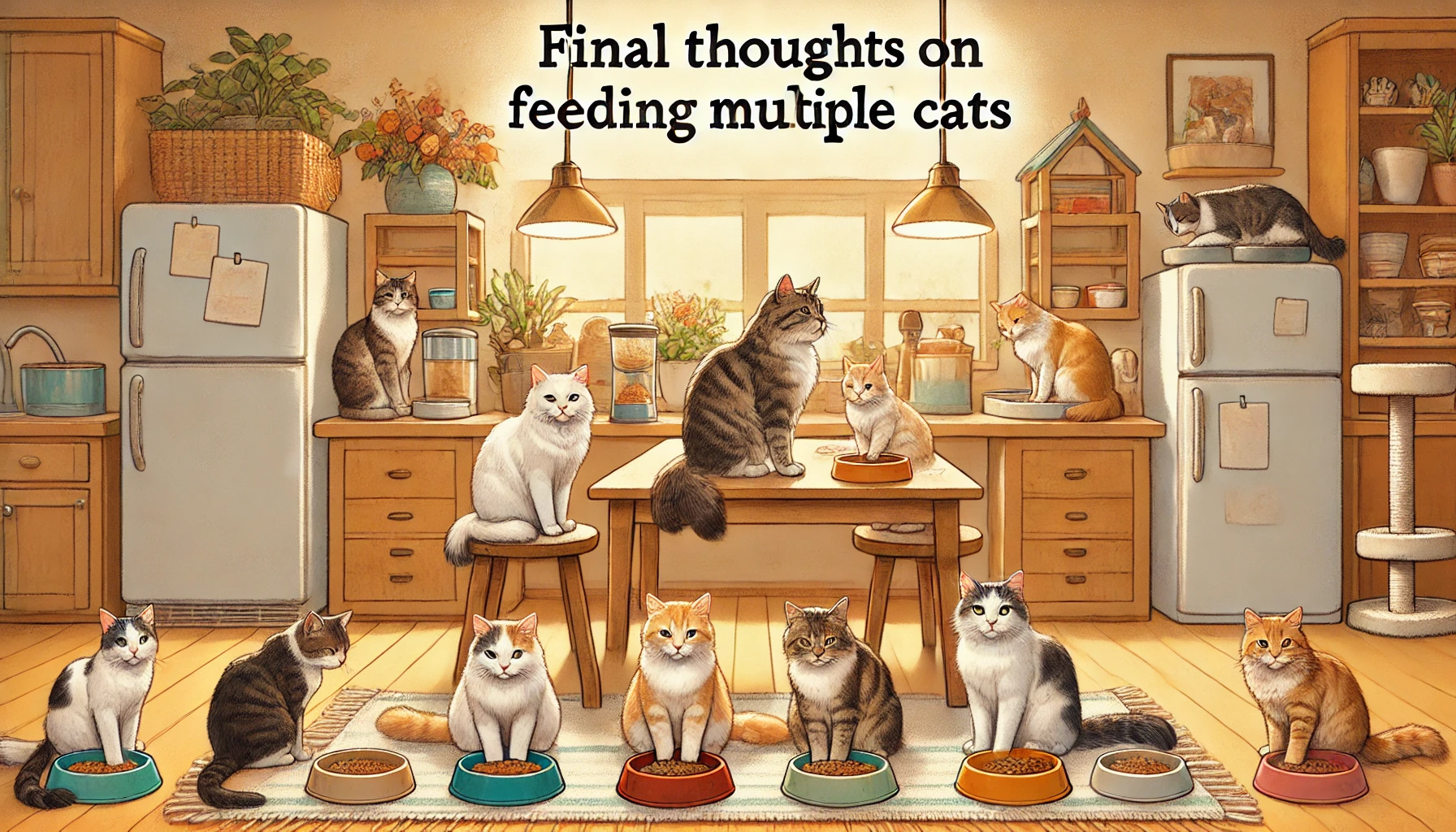
Final Thoughts on Feeding Multiple Cats
The key to successfully feeding multiple cats is establishing a routine.
Routine helps reduce anxiety, allowing all cats to know when and where they will be fed.
Whether you’re introducing a new cat to the household or managing different dietary needs, structure and planning are crucial to ensuring peaceful and harmonious feeding times.
By managing feeding schedules, preventing food conflicts, and considering the unique needs of each cat, you can create a positive and healthy feeding environment.
The right setup, combined with patience, can make a significant difference when feeding multiple cats.
Feeding multiple cats requires organization and understanding of their individual needs. A structured routine helps keep all cats healthy and stress-free during mealtime.
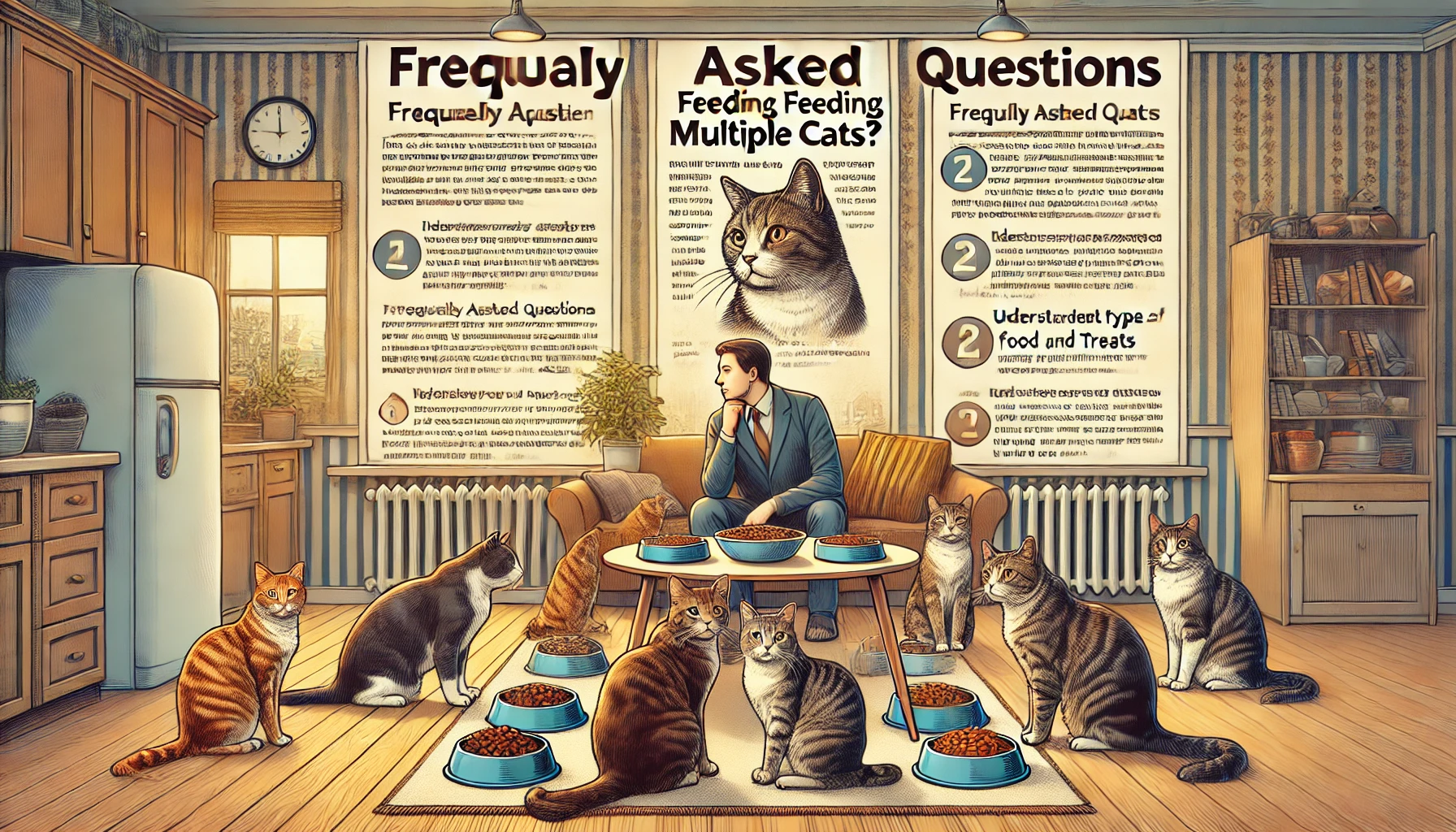
Feeding Multiple Cats: Frequently Asked Questions
Feeding multiple cats can present various challenges, from managing different diets to preventing conflicts.
To help, here are some of the most commonly asked questions regarding how to ensure your cats are well-nourished and happy.
How do I stop my cats from fighting over food?
Set up separate feeding stations in different areas and establish a structured feeding schedule to reduce competition.
Allow aggressive cats to eat in a different room to lower stress and prevent conflicts during mealtimes.
What can be done to best accommodate different cat diets?
Feed each cat based on their individual dietary needs.
Use separate feeding stations or timed feeders to ensure each cat gets the correct food and cannot access another cat’s food, especially if special diets are required.
How often should I feed multiple cats?
Feed your cats twice a day, once in the morning and once in the evening.
Consistent feeding times help reduce anxiety, as your cats will know when and where their next meal will be, minimizing conflict and stress.
Can I free-feed multiple cats?
Avoid free-feeding in multi-cat households, as it can lead to overeating and obesity.
Instead, portion meals and set specific feeding times to ensure your cats get the proper amount of food throughout the day.


